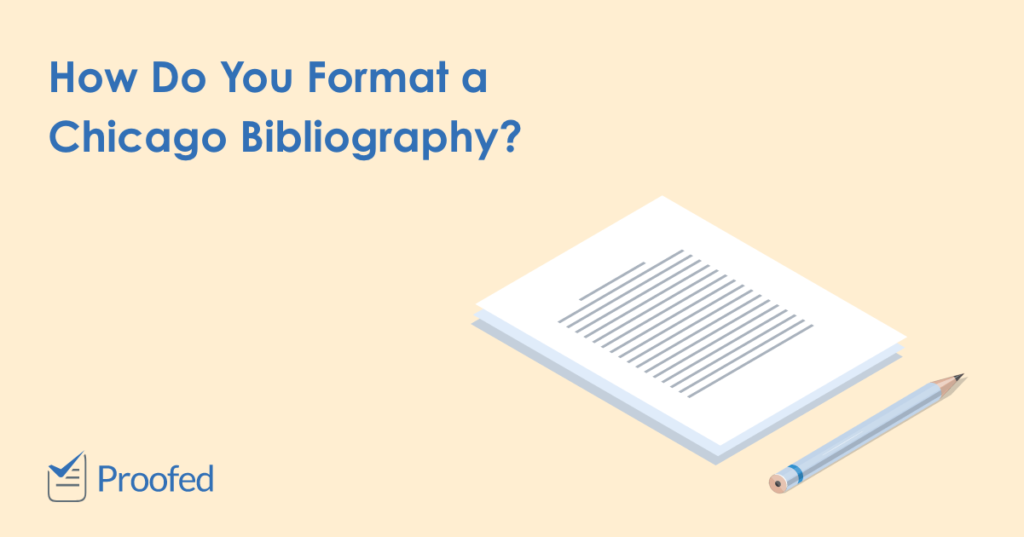As with most citation systems, Chicago referencing requires you to list all cited sources at the end of your document. However, this differs slightly depending on the system you’re using:
- With the footnote version of Chicago, you need a bibliography.
- With the author-date version, you need a reference list.
These are similar in practice, but make sure you know which version you need before finalizing the list of references in your document. And to help you get this right, we’ve compiled some key information on how to format a bibliography or reference list in Chicago referencing below.
How to Format a Bibliography (Chicago Footnotes)
When using the Chicago footnote system, you will list all cited sources in a bibliography at the end of your document. The main rules for formatting a Chicago bibliography are:
- Start it on a new page at the end of your document titled “Bibliography.”
- Include all sources cited in footnotes other than personal communications (e.g., unpublished letters and emails).
- Arrange sources alphabetically by the surname of the first listed author. If a source has no named author, use the first main word of the title instead.
- Invert the first listed author’s name for listing the source alphabetically.
- Additional authors names can be listed in the conventional order.
- Use the conjunction “and,” not the ampersand (&), between the last two author names for works with two or more authors.
- For works with ten or more authors, list the first seven followed by “et al.”
- When citing more than one work by an author, order them alphabetically by title. In addition, while you should give the author’s name for the first reference, subsequent entries should use three em dashes in place of the author’s name (e.g., ———. Title of Work. Publication Information).
- Italicize titles of books, journals, and other standalone publications.
- Use “quote marks” for titles of articles and book chapters.
- For website and book series titles, don’t use italics or quotation marks.
- Use title case for all titles, including books, websites, and articles.
- Provide DOIs instead of URLs for online sources whenever possible.
- Use a date of access when an online source has no date of publication.
As with any reference list, though, the most important factors are:
Find this useful?
Subscribe to our newsletter and get writing tips from our editors straight to your inbox.
- Providing enough information for your reader to identify each source.
- Using a clear and consistent style for all references.
How to Format a Reference List (Chicago Author-Date)
The format for a reference list in Chicago author-date referencing is essentially the same as above. However, there are a few differences:
- Use the title “References” at the top of the page.
- When citing multiple sources by a single author, arrange them by the date of publication (not the title of the source, as described above for the bibliography). As with the notes and bibliography system, use three em dashes for each entry after the first.
- When citing two or more works by the same author from the same year, add a letter after the year of publication for both citations and reference list entries (e.g., 2012a, 2012b, 2012c).
Except for these differences, use the format for a bibliography set out above.
Chicago Referencing Proofreading
You can find out more about referencing different source types in Chicago referencing on this blog. And whatever you’re citing, make sure to have your work proofread by the experts! We can make sure your referencing is clear, error free, and consistent throughout each document you write.



